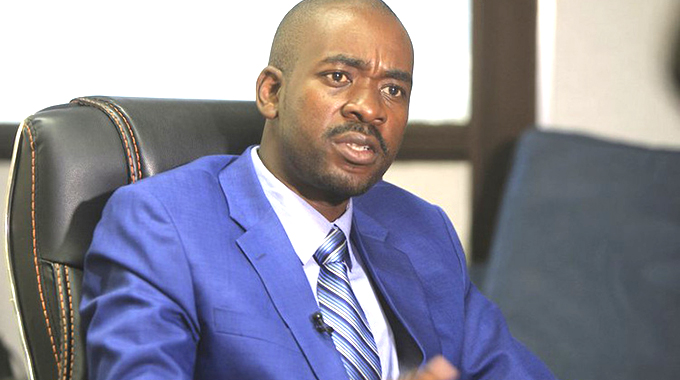Riding the wave: Surviving locust outbreak losses

Sifelani Tsiko
Agric, Environment & Innovations Editor
Ratidzo Tiringindi, a smallholder farmer in the Chilonga area of Chiredzi district watched helplessly as a swarm of locusts swept into his village, devouring all her sorghum and pearl millet in March this year.
With the unusually high rainfall in the 2020/2021 cropping season, she expected to harvest a bumper crop of around four tonnes of traditional grains in this dry and arid region of the country.
The scenes at her field were upsettingly familiar and played out in several parts of Chiredzi and Mwenezi districts with a devastating wave of swarms of a local type of species damaging their sorghum and millet crops.
Tiringindi had never witnessed anything like this in years.
“Madhumbudya (a local edible locust species called Ruspolia differens) destroyed all my sorghum and millet crops,” she said. “I lost everything. The locust destroyed everything.
“I was expecting at least four tonnes of sorghum and millet. My crop was good and had matured. My excitement was short-lived as locust destroyed my crops.”
The locust outbreak threatened her livelihood and that of many other farmers who depend heavily on rain-fed agriculture.
In March this year, the Plant Protection Research Institute detected an outbreak of three indigenous species which do not spread over long distances unlike the African migratory locust.
The three types of locust species that were identified included — the Ruspolia differens, commonly known as “madhumbudya,” the Cytacanthacris (green locusts) and the Cataloipus oberthuli known locally as ‘njeru’ which are all edible.”
The most affected areas were Chiredzi wards 1– 12 and 22 where more than 2 457 households had their crops damaged while in Mwenezi some 2 440 households in BJB, Chikokoto and Masangula.
The locust caused serious damage to sorghum, millet, maize and pastures. Armoured crickets also caused serious damage too.
Plant Protection Research Institute teams were dispatched to the districts to contain the outbreaks. The situation quickly got under control because rains had ended before the close of the season.
“I lost everything,” said Junica Nzembe of Tonono village in ward 7 of Chiredzi district. “Locusts stole my livelihood and I have to work hard to do other projects such as goat, chicken and cattle rearing to survive.”
All this, triggered hopelessness among the farmers in Chiredzi and Mwenezi. It was an unforeseen natural hazard. No one ever knew a plague was coming.
The farmers said they suffered significant losses when the local swarms descended on their crops.
“All my sorghum and millet is gone,” said Tiringindi. “Even after they have eaten everything on our fields, the madhumbudya (local locust species) have not left. They are still here. We catch them at night and we are eating them. We did not salvage much of the crop.
“We have to be brave and survive through this working on other options.”
Without support and intervention of the Zimbabwe Resilience Building Fund (ZRBF) Enhancing Community Resilience and Sustainability (ECRAS) project which trained and supported the locals to manage and run VSLAs commonly known as “Mukando” and other critical livelihood options such as nutrition gardens and rearing of cattle, goats, sheep and chickens, the food security situation here could have deepened.
The US$100 million project is being implemented by CARE, ICRISAT and PLAN with funding from the European Union, the embassy of Sweden, the United Nations Development Programme (UNDP) and the Foreign, Commonwealth and Development Office (FCDO), formerly known as DFID.
ECRAS was funded for US$9,7 million out of the ZRBF US$100million budget. It will run until 2022 and aims to contribute to an increased capacity of communities to protect development gains in the face of recurrent shocks and stresses enabling them to contribute to the economic development of Zimbabwe.
“I learnt a lot from the ECRAS project,” Tiringindi said. “I was taught how to do nutrition gardens, fish farming and how to rear chickens, goats, sheep and cattle. I started with 10 goats, 5 chickens and two cows but now, I have 175 goats, 13 cattle and many chickens including a thriving orchard. I sold 50 goats at US$40 each and I earned enough money to buy grain, clothing, food and to pay fees for my children.
“God knows what could have happened if we had no other option. The locusts could have reduced us to beggars. But here we are, proud and surviving through this locust outbreak.”
The ECRAS project has played a big role in building their livelihood resilience, helping them to take up other options to fight food insecurity in the face of the locust outbreak which decimated their crop.
In other years, harsh climatic conditions brought about by frequent droughts all bring misery to most smallholder farmers in the drought — prone Chiredzi and Mwenezi districts.
With targeted interventions such as fish farming and the rearing of chickens, goats and cattle, the smallholder farmers manage droughts and other natural shocks such as pest outbreaks.
It brings hope and continuity of life in the wake of droughts and other natural shocks.
“Relying on crop farming alone is not good for us,” said Tiringindi. “We have to have other income streams to earn livelihoods to survive droughts, floods and locust outbreaks. Chiredzi is a very dry area and very often we have droughts and times we are affected by floods.
“With adequate training to do fish farming and the rearing of goats, chicken, sheep and cattle we can survive these natural shocks.”
Diversifying livelihoods is a critical component for survival of smallholder farmers. Livestock feed making and the growing of fruits and vegetables from nutrition gardens also builds the resilience of farmers.
It helps farmers to fight food insecurity and give households several on – farm survival strategies.
Tiringindi now looks to the future with much hope and confidence.
“I want to buy a tractor to help us till the land,” she said. “I also want to raise money to drill a solar powered borehole and build a shade for my goats.
“With diverse on–farm activities it’s very possible to raise the money to do this. In addition, we will not die from hunger. Empowerment reduces our heavy reliance on donor food. It leaves us with some important tools for survival.”








Comments